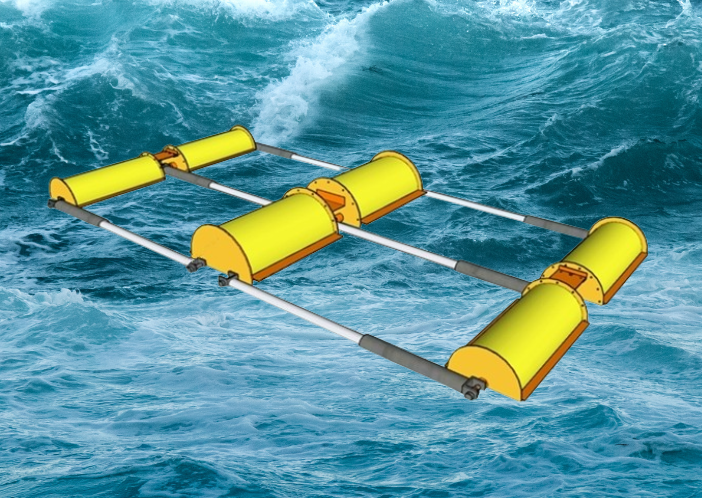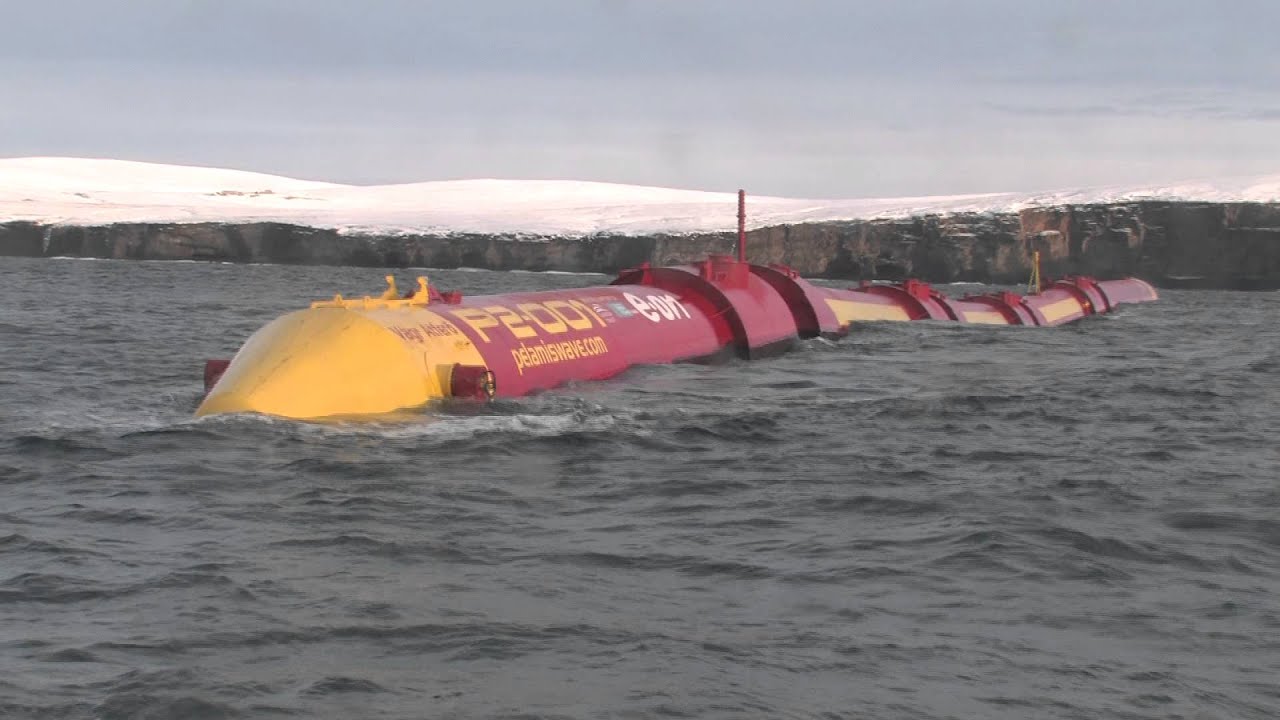Author: John Nguyen
Affiliation: Twin Ocean Power
Email/Contact: johnng7072@gmail.com
Date: 4/10/2025
Abstract
This paper outlines the development of Twin Ocean Power, a next-generation wave energy converter (WEC) inspired by the Pelamis system. It begins with the author’s discovery of Pelamis in 2007 and the subsequent creative process that led to the invention of a new wave energy solution in 2008. Twin Ocean Power introduces a tri-body float configuration and a simplified mechanical energy conversion system that enhances efficiency, reduces complexity, and improves scalability. The design leverages direct mechanical PTO, modular connections, and a structure aligned with wave motion to optimize energy capture and minimize maintenance. This paper details the system’s technical principles, innovation trajectory, and its potential impact on the future of marine renewable energy.
Technical Description, Innovation, and Impact
1. Relevance and Outcomes
The Twin Ocean Power Wave Energy Converter (WEC) is designed to efficiently and cost-effectively harness wave energy, addressing key challenges in renewable energy production. The system consists of six buoyant cylinders arranged into three independent buoy sets: a central main set and two outer sets. This configuration is aligned perpendicular to the wave direction and parallel to the wave crests, optimizing energy capture across varying sea conditions.
Each buoy set comprises three main components: a central unit and two cylindrical housings attached to either side. Two direct power take-off (PTO) converters are positioned at each end of the central unit to convert wave energy into usable power. Within the central unit, a short shaft and axle enable efficient energy transfer from the buoy sets to the PTOs, optimizing energy conversion while simplifying installation and maintenance. The PTO system converts bidirectional low-speed rotation into unidirectional high-speed rotation, maximizing energy efficiency. A torque limiter controls torque transfer from the output gearing to the alternator, preventing overload and ensuring system protection. Additionally, the modular design reduces complexity, enhancing cost-effectiveness and durability.
The buoy sets are connected by length-adjustable, pivoting arms, which allow each set to move independently. This independent movement ensures that the system can adapt to unbalanced wave conditions, maintaining optimal performance under varying sea states. Furthermore, the connecting arms are easily removable, providing a significant advantage for logistics and maintenance, as they simplify transportation, assembly, and servicing.
2. The Inspiration: Discovering Pelamis
I first saw Pelamis in an online video around 2007. It was referred to as the “Sea Snake”—a long, articulated device gracefully floating on the ocean surface, converting wave motion into electricity. Pelamis consisted of five long cylindrical sections connected by four hydraulic power take-off (PTO) central joint units, each housing a hydraulic conversion system that transferred energy into electricity. The system was deployed perpendicular to the wave direction, allowing articulated joints to bend as waves passed along the length of the device. This motion created mechanical energy that the hydraulic system converted into power.
Pelamis was elegant and simple, yet it also made me question: “Can I design something better?”
3. From Vision to Invention
Building on that vision, I began developing and refining the system that would eventually become Twin Ocean Power. The breakthrough innovation was a configuration of six long cylindrical floats, grouped into three pairs to form a unique tri-body structure: a large central body flanked by two smaller bodies, each connected to the center and moving in a motion reminiscent of a bird’s wings.
Unlike Pelamis, this design is aligned parallel to the wave column, allowing each floating body to rise and fall with the peaks and troughs of the waves. This orientation enhances vertical motion capture, enabling the system to harness more wave energy with greater mechanical efficiency. The design uses a single central PTO unit for direct mechanical conversion of wave-induced motion, offering a simplified and more reliable alternative to Pelamis’ hydraulic system. This PTO system relies on a gearing mechanism to convert low-speed bidirectional rotation into high-speed unidirectional rotation for efficient energy transfer.

The tri-body structure is connected by removable, pivoting arms, allowing each float to move independently while maintaining mechanical alignment. These arms enable quick assembly and disassembly, offering flexibility for deployment and maintenance. This modular approach simplifies transport, reduces operational downtime, and makes the system highly adaptable to various marine environments.
The motion of the side bodies relative to the central float powers the centrally housed PTO—resulting in a compact, structurally balanced, and highly efficient energy-harvesting system. The simplified design reduces both operational and maintenance costs, while the direct conversion process enhances the overall efficiency of the system.
4. Environmental Impact and Sustainability
Twin Ocean Power is designed with sustainability in mind. The system’s modular, scalable design reduces environmental impact by using fewer complex components compared to traditional wave energy converters. Unlike systems reliant on hydraulic fluids or heavy mechanical parts, Twin Ocean Power’s direct mechanical PTO system minimizes the need for potentially harmful chemicals or waste products.
Additionally, the system’s design ensures that it can be deployed in various ocean environments, including remote and offshore locations, where it can provide a clean, renewable energy source. The use of buoyant structures reduces the need for large, energy-intensive components, and the simplicity of the design lowers the carbon footprint of manufacturing and maintenance.
5. Economic and Operational Benefits
The modular nature of Twin Ocean Power offers a substantial economic advantage. The removable connecting arms, which allow for quick disassembly and transport, drastically reduce installation costs. Furthermore, the direct mechanical PTO system eliminates the need for costly and high-maintenance hydraulic systems, contributing to long-term savings.
The scalable architecture of Twin Ocean Power also means that it can be easily expanded or contracted depending on the energy demands of specific locations. This flexibility makes it ideal for both small-scale and large-scale deployments, ensuring that the technology is adaptable to a wide range of marine energy projects.
6. Real-World Applications
The potential for Twin Ocean Power extends beyond conceptual innovation—it has practical applications for the growing global need for clean, renewable energy. As interest in ocean-based energy technologies rises, Twin Ocean Power stands poised for real-world deployment in coastal communities, remote islands, and offshore energy farms.
Its simplified design and modular construction make it an attractive option for mass deployment, and early trials could begin in regions with consistent wave patterns to validate the system’s efficiency and durability. Collaborative partnerships with renewable energy companies or government agencies could accelerate the development and integration of Twin Ocean Power into existing renewable energy grids.
7. Conclusion
From the moment I first encountered Pelamis, I was inspired by its elegance and simplicity. However, through curiosity and persistence, I was able to innovate and improve upon the concept to create Twin Ocean Power—a system that not only harnesses wave energy more efficiently but also reduces complexity, enhances scalability, and minimizes environmental impact. This journey, from inspiration to invention, demonstrates the power of renewable energy innovation and the potential for transformative change in marine energy technology.







